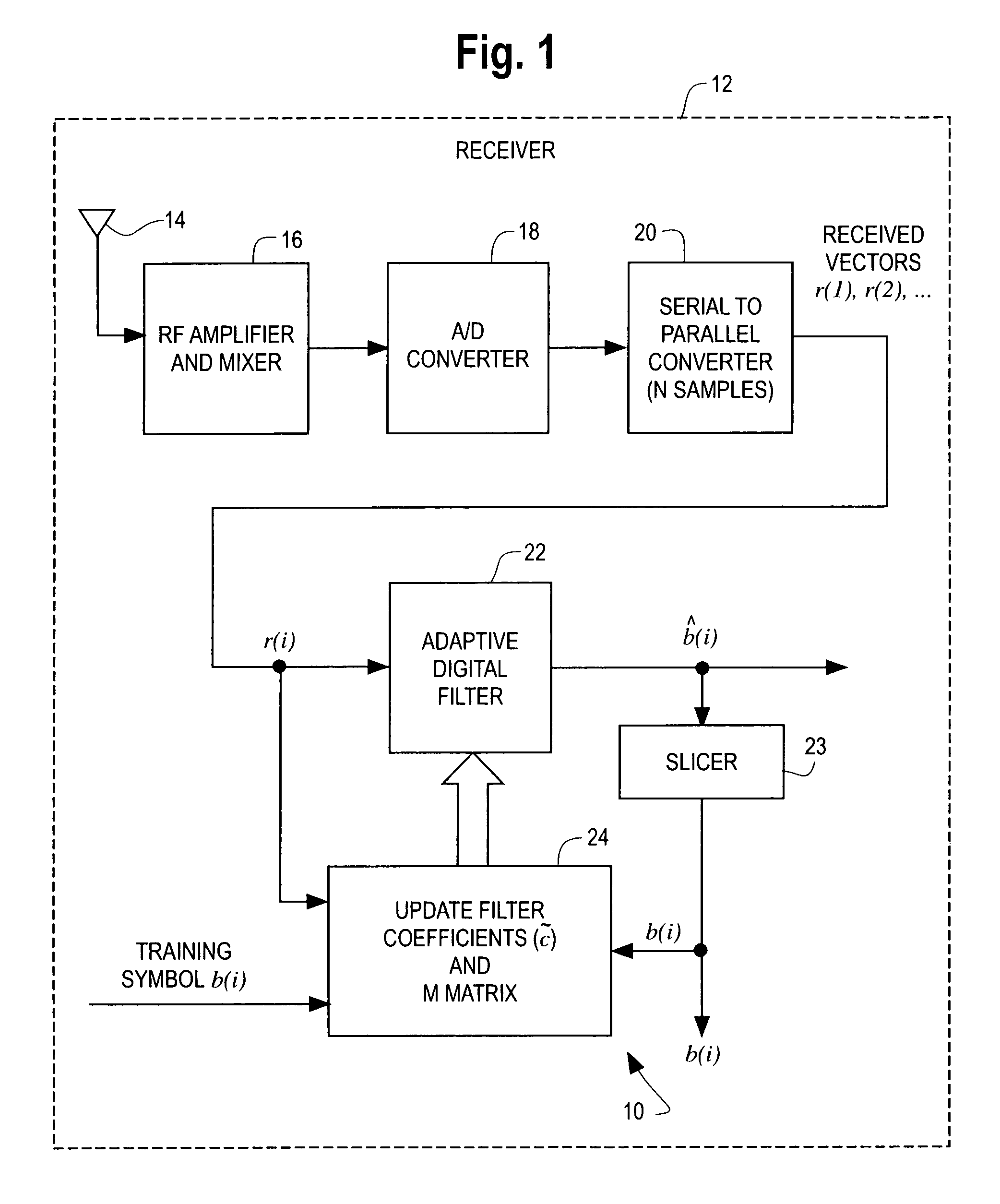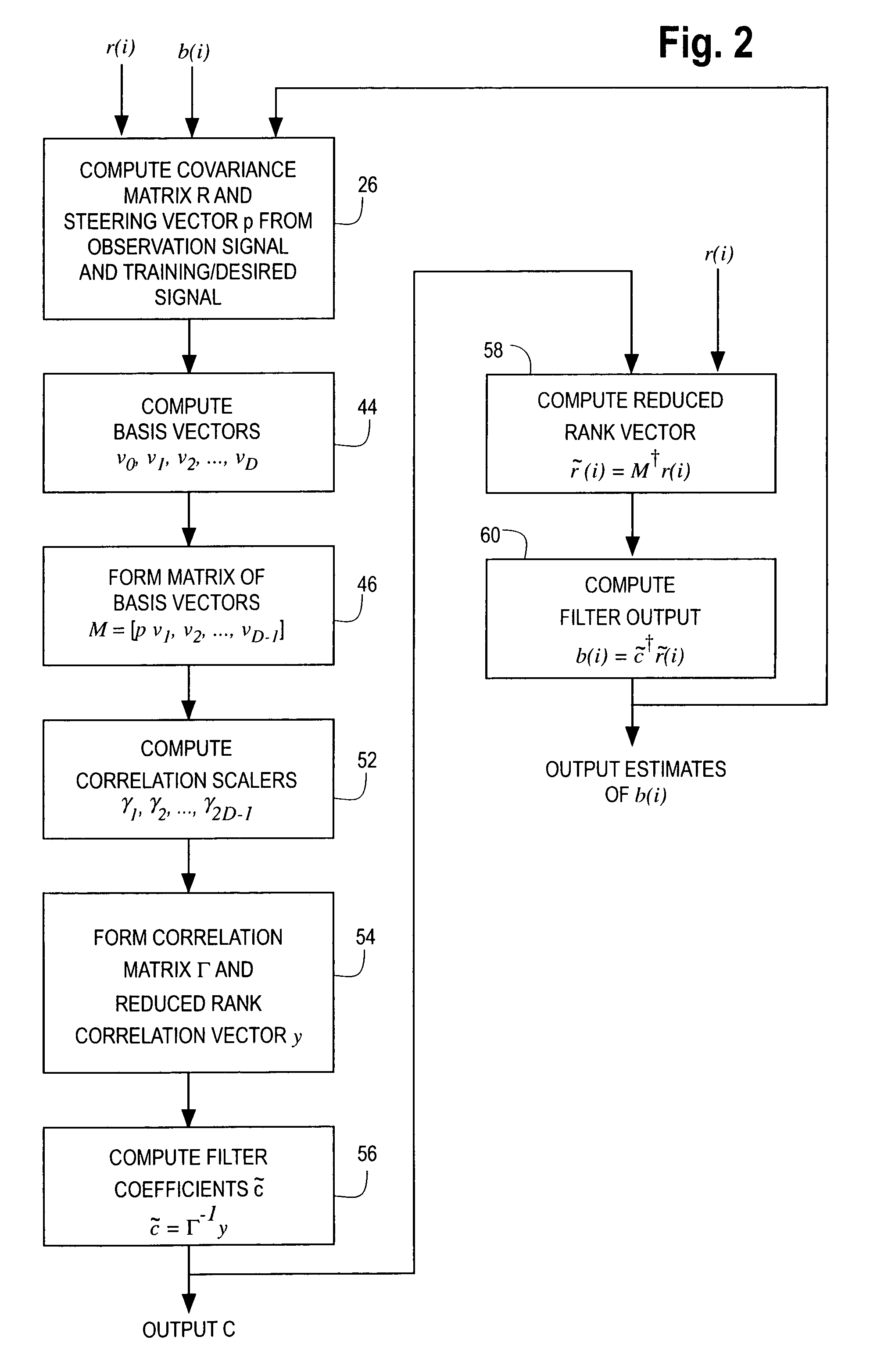Reduced rank adaptive filter
a filter and rank reduction technology, applied in the field of adaptive digital filtering, can solve the problems of inability to achieve near full rank performance, insufficient rank performance, and complex covariance matrix, and achieve the effect of less training samples, faster tracking and convergence, and full rank performan
- Summary
- Abstract
- Description
- Claims
- Application Information
AI Technical Summary
Benefits of technology
Problems solved by technology
Method used
Image
Examples
Embodiment Construction
[0016]The reduced rank adaptive digital filtering technique 10 of the present invention is illustrated in FIG. 1 for interference suppression in a wireless CDMA communication system having a receiver 12. Although illustrated for a wireless communication system, the filtering technique of the present invention can be used in any adaptive digital filter application. The receiver 12 picks up a received signal via an antenna 14 coupled to a radio frequency (RF) amplifier and mixer 16. The output of the amplifier / mixer 16 is coupled to an analog to digital converter 18 to provide a serial stream of baseband digital data samples representing the received signal. The output of the digital to analog converter 18 is coupled to a serial to parallel converter 20. The serial to parallel converter 20 takes N serial samples and outputs the N samples in parallel to provide a received sample vector r(i) of digital data having a dimension of N×1.
[0017]The received sample vector r(i), which is referr...
PUM
 Login to View More
Login to View More Abstract
Description
Claims
Application Information
 Login to View More
Login to View More - R&D
- Intellectual Property
- Life Sciences
- Materials
- Tech Scout
- Unparalleled Data Quality
- Higher Quality Content
- 60% Fewer Hallucinations
Browse by: Latest US Patents, China's latest patents, Technical Efficacy Thesaurus, Application Domain, Technology Topic, Popular Technical Reports.
© 2025 PatSnap. All rights reserved.Legal|Privacy policy|Modern Slavery Act Transparency Statement|Sitemap|About US| Contact US: help@patsnap.com



